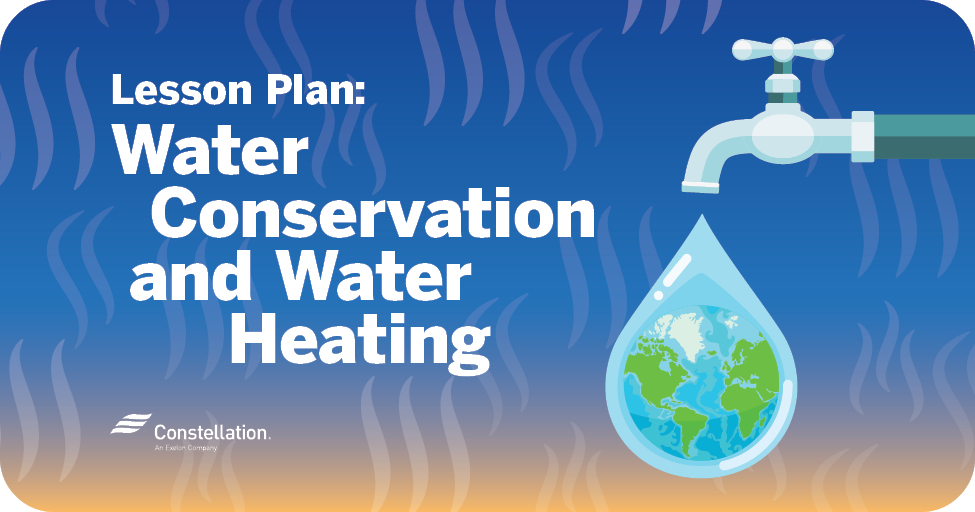
- Category:
Energy Efficiency -
Last updated:
March 28, 2022
Lesson Plan: Water Conservation
The amount of water you use in your household can have a big impact on the total amount of energy used by your home. Heating water for showers, baths, laundry and dishes accounts for more than 15 percent of a home’s utility expenses. In most homes, this is the second or third largest expense! Beyond heating the water, large amounts of energy are put into producing, treating, distributing, and disposing of the water you use. The average American household of four uses about 400 gallons of water every day! These activities will help students learn about water conservation and to understand how they use water and how they may be wasting water. Students will work to measure how much water they actually use during their daily tasks to consider water-saving behaviors and tactics in the home.
Looking for more home energy activities? We’re pleased to work with The National Energy Education Development Project (NEED), to deliver these fun activities. Be sure to check out their library of resources, and their specialized collection of energy-themed distance/at-home learning activities. All activities are totally free for use at home or school, and accessible by visiting their website, www.NEED.org.

- Background reading: A Word About Water
- Printable worksheet – Most Wanted Water Wasters

- Background reading: Managing Home Energy Use, Thermal Energy & Water
- Printable worksheet – Comparing Water Heaters

- We’re In a Lot of Hot Water will ask students to get their hands wet as they quantify and think carefully about their water-related activities at home. The activities focus on the bathroom faucets and the shower. Students will measure the water the faucet and shower fixtures emit in a given amount of time. They will then crunch the numbers to determine how much water flows per minute in gallons (GPM) from each fixture. Students can then apply their math to determine how many gallons they use for tasks like showering, brushing teeth, and even washing hands. Another metric that can be observed is the hot water temperature. Students will measure and determine if the water heater can be adjusted lower for a savings. This activity can use specialized tools like flow meter bags, aerators, and low-flow shower heads, however, everything can be done with a bucket and a timer. If you can’t change your fixtures to help you save water and money, you can always change your behaviors!
Additional support links:
- https://switchon.org/ (Free signup for all video clips)
- https://www.eia.gov/energyexplained/
- https://www.eia.gov/kids/
Fall Lesson Plans:
- Lesson Plan 1: Biomass
- Lesson Plan 2: Hydropower
- Lesson Plan 4: Climate Change and Energy Conservation
- Lesson Plan 5: Heating and Cooling
Spring Lesson Plans:
- Lesson Plan 1: Energy Basics and Energy Sources
- Lesson Plan 2: Electricity and Electricity Generation
- Lesson Plan 3: Conservation at Home
- Lesson Plan 4: Wind and Natural Gas
- Lesson Plan 5: Solar Energy
- Lesson Plan 6: Understanding Your Energy Bill
- Lesson Plan 7: Measuring Your Electricity Consumption
- Lesson Plan 8: Lighting and Appliances




